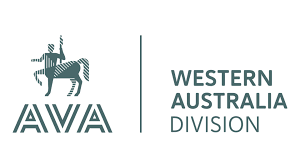
Summary of the AVA Brachycephalic Breeding Policy
- Jul 18
- 2 min read
Updated: Jul 27
The French Bulldog is a brachycephalic (snub nosed) breed. It is the most popular dog breed in America and in Australia the breed is rising in popularity with each year and is currently ranked 6th. Sadly, with the rise in popularity, so too has the numbers of French Bulldogs with significant health issues.
Each country has its own Veterinarian Association who often function as advisory organisations to Governments with respect to forming and reviewing Legislation.
Today we are taking a look and summarising the Australian Veterinarian Associations (AVA) Brachycephalic Dog Breeding Policy which was published in December 2021.
The policy highlights that due to the continued selection for extreme features and the surge in popularity, there is an URGENT need for change in breeding practices, with particular focus on addressing BOAS and spine abnormalities which they consider the 2 most important health issues to address.
In summary, the recommendations of the policy are as follows:
•Breeders need to truthfully disclose to dog owners taking on a brachycephalic dog the health implications of BOAS and vertebral abnormalities and this should be MANDATED BY LAW.
•Individual dogs should be assessed under anaesthesia for BOAS and any dog requiring BOAS surgery SHOULD NOT BE USED FOR BREEDING.
•Breeders should select breeding dogs based first and foremost on healthy airways and spinal columns NOT Breed Standards.
•Dogs with a Craniofacial Ratio (CFR) less than one third of the skull length (0.3) SHOULD NOT BE USED FOR BREEDING
•A dog with a vertebral abnormality (hemivertebrae) SHOULD NOT BE USED FOR BREEDING as there is a proven genetic link in French Bulldogs, English Bulldogs and Boston Terriers.
The policy proposes the following method of assessment to remove vertebral abnormalities from these affected brachycephalic breeds:
•Dogs should be DNA tested (genetically tested) for DVL2 and dogs with the defect MUST NOT BE BRED OR SHOWN
•IF NO DVL2 DNA test is available, then at 12 months of age the dog should undergo a CT scan of the spine.
•If no CT scan is available then an Xray will be sufficient.
•Images must be of the entire spine and tail and be assessed by veterinarian radiologists with experience in vertebral body assessment
•Dogs that are diagnosed with with a vertebral body abnormality must NOT BE BRED OR SHOWN
So there you go, we have been given the blueprint on how to improve the health of these breeds by our country's most qualified to do so. Based on the above recommendations, our gene pool would be whittled down to almost nothing but that doesn’t mean we can’t work towards these recommendations and so it is vital for us to step up today not tomorrow and make changes to our breeding programs to work towards these goals. If we wait until the Government puts the recommendations of this policy into the Legislation, it will be too late.
https://www.ava.com.au/policy-advocacy/policies/companion-animals-health/brachycephalic-dog-breeding
LINKS TO OTHER RELEVANT AVA POLICIES:
AVOIDING THE USE OF DOG BREEDS WITH EXTREME FEATURES:
AVOIDING THE USE OF DOMESTIC ANIMALS WITH GENETIC DEFECTS:
SURGICAL ARTIFICIAL INSEMINATION MUST NOT BE PERFORMED:






Comments